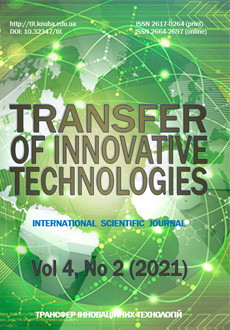Investigation of the relationship between the strength limit and the long time fatigue of steel reinforcements of reinforced concrete structures
DOI:
https://doi.org/10.32347/tit2021.42.0201Keywords:
crack resistance, flooding, fatigue, cyclicity, fittingsAbstract
The results of experimental studies have shown a strong effect of diffusion hydrogen on the static and cyclic parameters of crack resistance of reinforcing steel. It was found that with increasing flooding, especially when the hydrogen content exceeds 5 cm3/100g, both static strength and long-term strength (fatigue) decrease sharply. Moreover, these areas of hydrogen solution in reinforcing steel are characterized by a viscous nature of fracture, while for heavily flooded reinforcement (from 5 to 12 cm3/100g) is characterized by brittle fracture by the mechanism of microcracking in the hardened (martensite or troostite structure). The analysis of the obtained experimental results allowed to determine the optimal hydrogen content in the reinforcing steel (3…5 cm3/100g), the excess of which can cause a decrease in the crack resistance of the reinforcement during long-term operation, especially in corrosive environments.
The mechanism of hydrogen influence on crack resistance of metal at static and alternating loading which consists in diffusion and dislocation movement of hydrogen in structure of a reinforcing core that as a result that causes strong flooding of steel and its embrittlement is offered. It is established that carbon and low-alloy sieves, which are characterized by ferritic-pearlitic and sorbitol structure provide high resistance, especially to long-term fatigue, and the transition to steels with a structure of martensite or tempered (transient structure of bainite) structure of bainite sharply reduces reinforcing steel, which makes it impossible to use in the manufacture of reinforcement involved in reinforced concrete structures designed for long-term operation (more than 50…60 years). Thus, the obtained diagram can be recommended to designers of reinforced concrete structures for hydraulic purposes, as it greatly facilitates the reasonable choice of reinforcement in the development of reinforced concrete structures for responsible and long-term use.
References
Makhutov N.A., 1981. Deformation criteria of destruction. Moscow, Mashinostroenie, 272 (in Russian).
Archakov Yu.I., 1980. Hydrogen corrosion of steel. Moscow: Metallurgy, 192 (in Russian)
Atomic mechanism of destruction, 1983, trans., ed. MA Stremel. Moscow: Mir, 660 (in Russian).
Kalachev B.A., 1985. Hydrogen brittleness of metals. Moscow: Metallurgy, 216 (in Russian).
Meshkov Yu.Ya., 1985. Physical foundations of the strength of steel structures. Kyiv, Naukova Dumka, 266 (in Russian).
Petrov L.N. Sopronyuk N., 1988. Corrosion-mechanical destruction of metals and alloys. Kyiv, Naukova Dumka ,488 (in Russian).
Makarenko V.D., Mangura A.M., Sizonenko A.V., Litvyak O.L., 2019. Mechanisms of corrosion-carbon corrosion of structural tubular steels for oil and gas application. Modernization and engineering development of resource-saving technologies in mining and processing of minerals. Collective monograph. Petroshan, Romania: Universitas Publishing, 424, 57-70 (in Ukrainian).
Makarenko V., Vynnykov Y., Liashenko A., Petrash O., 2019. Hydrate Formations Modeling for the Oil and Gas Facilities Re-construction. Proceedings of the 2nd International Conference on Building Innovations. ICBI Lecture Hydrate Formations Modeling for the Oil and Gas Facilities Re-construction Notes in Civil Engineering, Vol.73, Springer, Cham. 651-658 (in Ukrainian).
Boyko A.V., Makarenko V.D., Maximov S.Yu., 2021. On some mechanical characteristics of structural steels of cooling systems of long operation. Problems of durability, No.2 (470), 77-81 (in Russian).
Makarenko, V.D., & Morgun, I.D., 1991. Special features of the effect of barium on the mechanical properties of metal deposited in welding with calcium fluoride electrodes. Welding International, 5(9), 726-728 (in Ukrainian).
Pokhodnya I.K., Ponomarev V.E., Mili-chenko S.S., Skorina N.V., Makarenko V.D., Marchenko A.E., Gorpenyuk V.N., 1987. Effects of type of binder and its composition on the welding and properties of electrodes with basic coatings. Welding International, 1(2), 116-118 (in Russian).
Sukach M.K., 2021. The Staple-ShapePlate Springs Engineering Calculation Method. Science and Technique. 20 (3), 268-274, https://doi.org/10.21122/2227-1031-2021-20-3 (in Russian).
Pushkarova K., Sukhanevych M., Bondar K. (2015). The principles of composite construction penetrability waterproofing mortars with increased service life. Underwater Technologies Iss.02, 46.
Mishchuk D., 2015. Research of the manipulator dynamics installed on an elastic basis. Underwater Technologies, Iss.02, 54.
Horbatenko Y., 2020. The production of the splash phenomenon, as a way of dissipating the energy of a gravitational wave. Underwater Technologies, Iss.10, 58.
Sukach M.K., 2018. The theoretical basis for calculatingthe bracketed leaf springs. Transfer of Innovative Technologies, Vol.1, No.2, 40-50. https://doi.org/10.31493/tit1812.0201 (in Russian).
Chernyshev D.O., 2017. Methodological principles of providing the reliability of organizational and technological solutions in projects of biosphere construction buildings. Management of development of complex system, Vol.32, 210-215 (in Ukrainian).
Khomutetska T.P., 2015. Ways to ensure the effective operation of water supply companies / TP Khomutetska. Khomutetska. Problems of water supply, drainage and hydraulics: Science and Technology, Iss.25, Kyiv, 273-279 (in Ukrainian.
Downloads
Published
How to Cite
Issue
Section
License
Copyright (c) 2021 Denys Chernyshev, Yulia Makarenko, Tetiana Khomutetska, Valeriy Makarenko

This work is licensed under a Creative Commons Attribution 4.0 International License.
Our journal abides by the CREATIVE COMMONS copyright rights and permissions for open access journals.
Authors, who are published in this journal, agree to the following conditions:
1. The authors reserve the right to authorship of the work and pass the first publication right of this work to the journal under the terms of a Creative Commons Attribution License, which allows others to freely distribute the published research with the obligatory reference to the authors of the original work and the first publication of the work in this journal.
2. The authors have the right to conclude separate supplement agreements that relate to non-exclusive work distribution in the form in which it has been published by the journal (for example, to upload the work to the online storage of the journal or publish it as part of a monograph), provided that the reference to the first publication of the work in this journal is included.




